MIG 20s 400 mg film-coated tablets
$15.10
Description
Trade name
МИГ® 400
International unlicensed
names Ibuprofen Dosage Form
of the Tablet, film coated 400 mg
Structure
One tablet contains
active agent – an ibuprofen of 400 mg,
excipients:
structure of a kernel: corn starch, silicon dioxide colloidal anhydrous, sodium of starch stearate,
structure of a cover glikolit (type A), magnesium: gipromelloza (nominal viscosity of 6 MPas · c),
a macrogoal 4000, K 30 povidone, the titan dioxide (E 171)
the Description
of the Tablet, film coated from white till almost white color, oblong shape, with risky on both parties and press Е on both parties risks on one party.
Pharmacotherapeutic group
Non-steroidal anti-inflammatory drugs. Derivatives of propionic acid. Ibuprofen.
ATH code: M01AE01
the Pharmacological
Pharmacokinetics At properties intake an ibuprofen is partially soaked up already in a stomach and then – already completely – in a small intestine. After metabolic transformations in a liver (hydroxylation and carboxylation), pharmacological inactive metabolites are completely removed, mainly, with urine (90%) and also with bile. Elimination half-life at the healthy and sick, suffering diseases of a liver and kidneys, makes 1.8-3.5 hours, communication with proteins of plasma – about 99%. After single dose of an ibuprofen in a dose of 400 mg the peak of concentration in plasma – 20-40 mkg/ml occur within 1-2 hours, however in six hours after introduction the concentration makes near 5μg/mL.
A pharmacodynamics
the Ibuprofen – the non-steroidal anti-inflammatory drug possessing analgeziruyushchy, febrifugal and anti-inflammatory action. The effect of drug is caused by slowing down of synthesis of prostaglandins due to cyclooxygenase enzyme blocking. Besides, the ibuprofen suppresses the aggregation of thrombocytes caused by ADF and collagen.
Indications
– a pain syndrome of easy and average degree of intensity
– a feverish syndrome in catarrhal and infectious diseases
the Route of administration and doses
the Dosage depends on the details provided in the table below. The dosage of drug МИГ® 400 at children and teenagers depends on the body weight and age. The single dose at children and teenagers makes, as a rule, 7-10 mg/kg of body weight at the maximum daily dose of 30 mg/kg.
The interval between receptions depends on symptomatology and the maximum general daily dose, it is not recommended to repeat reception earlier, than in 6 hours.
It is impossible to use drug more than 7 days or in higher doses without consultation with the doctor.
In the presence of complaints, for example pains or the fevers proceeding within more than four days it is necessary to see a doctor.
The body weight
(age)
the Single dose
the Maximum daily dose
In pains and fever
≥ 40 kg
(teenagers are more senior than 12 years, adults)
½ – 1 tablet (that corresponds to 200 – 400 mg of an ibuprofen)
1200 mg of an ibuprofen
the Way and duration of use
МИГ® 400 should be accepted, without chewing and plentifully washing down with liquid, in time or after a meal.
For reduction of risk of development of dispeptic effects it is recommended to accept МИГ® 400 at meal time.
Special groups of patients
Patients of advanced age:
Special dose adjustment is not required. At elderly patients especially careful control of a state because of possible side effects is necessary.
It is necessary to apply with care in associated diseases of a liver and kidneys. Special dose adjustment is not required. At treatment it is necessary to control function of a liver and kidneys systematically.
Side effects
Often (from ³ 1/100 to & lt, 1/10)
– complaints from digestive tract, such as heartburn, abdominal pain, nausea, vomiting, meteorism, diarrhea, constipation and also insignificant gastrointestinal bleedings
Sometimes (from ³ 1/1000 to & lt, 1/100)
– disturbances from the central nervous system, such as headache, dizziness, insomnia, excitement, irritability or fatigue
– disorders of vision
– gastritis, a stomach ulcer/duodenum with a likelihood of developing bleeding and perforation, a stomacace, exacerbation of nonspecific ulcer colitis or Crohn’s disease
– the reactions of hypersensitivity which are followed by skin rash and an itching and also asthma attacks (in certain cases with falling of arterial blood pressure). To patients recommend to stop immediately in similar cases administration of drug МИГ® 400 and to see a doctor.
Seldom (from ³ 1/10000 to & lt, 1/1000)
– sonitus
Very seldom: & lt, 1/10.000
– a cardiopalmus, heart failure, a myocardial infarction
– hemopoiesis disturbances (anemia, a leukopenia, thrombocytopenia, a pancytopenia, an agranulocytosis). At drug treatment it is necessary to carry out the general blood test regularly.
– an esophagitis, pancreatitis, formation of diafragmopodobny strictures of intestines
– appearance of hypostases, especially at patients with an arterial hypertension or a renal failure, a nephrotic syndrome, interstitial nephrite which can be followed by an acute renal failure. In rare instances defeat of renal fabric (necrosis of renal nipples) with increase in concentration of uric acid in blood can be observed therefore regular control of function of kidneys is necessary.
– a multiformny exudative erythema, including Stephens-Johnson’s syndrome and a toxic epidermal necrolysis
– in chicken pox the development of heavy skin infections and complications from soft tissues is in exceptional cases possible
– aggravation of inflammatory processes of infectious origin (for example, development of a necrotizing fasciitis), connected with use of non-steroidal anti-inflammatory drugs
– symptoms of aseptic meningitis, such as muscle tension of a nape, headache, nausea, vomiting, temperature increase or turbidity of consciousness. Patients with autoimmune diseases are predisposed to emergence of such states (a system lupus erythematosus, mixed collagenoses).
– arterial hypertension
– heavy general reactions of hypersensitivity. These reactions can be shown in the form of a face edema, language and a throat with narrowing of airways, respiratory a distress syndrome, a cardiopalmus, falling of arterial blood pressure up to the shock posing hazard to life. At emergence of any of these symptoms that can occur even at the first use of drug, urgent medical assistance is necessary.
– an abnormal liver function, damage of a liver, especially at long therapy, a liver failure, an acute hepatitis
– psychotic reactions,
the Contraindication depression
– at hypersensitivity to active ingredient to an ibuprofen or one of excipients,
– in the presence in the anamnesis of reactions of a bronchospasm, asthma, rhinitis or urticaria after intake of acetylsalicylic acid or other non-steroidal anti-inflammatory drugs,
– at disturbances of a hemopoiesis of the obscure origin,
– in the presence in the present or in the past of a recurrent round ulcer / hemorrhages (two or more separate episodes of the confirmed peptic ulcer or bleedings),
– in the presence in the anamnesis of gastrointestinal bleeding or perforation of an ulcer connected with the therapy appointed earlier non-steroidal anti-inflammatory drugs
– in the cerebrovascular bleeding or other bleeding which is available now
– in heavy renal failures or a liver,
– in heavy heart failure,
– the third trimester of pregnancy
– the lactation period
– to children aged up to 12 years
– decrease in hearing, pathology of a vestibular mechanism
Medicinal interactions
the Ibuprofen (as well as other NPVP) demands extra care at reception with the following medicines:
Other NPVP, including salicylates:
The concomitant use of several various NPVP can increase risk of gastrointestinal ulcers and bleedings because of effect of synergism. In this regard the simultaneous use of an ibuprofen and other NPVP is not recommended.
Digoxin, Phenytoinum, lithium:
Use of drug МИГ® 400 along with digoxin, Phenytoinum or lithium can increase concentration of these medicinal substances in plasma. Control of concentration of lithium, digoxin and Phenytoinum in plasma at the correct use, as a rule, is not required (as much as possible within 4 days).
Diuretics, APF inhibitors, beta-blockers and antagonists of angiotensin II:
NPVP can reduce efficiency of diuretics and other hypotensive drugs. With a renal failure (for example, at the patients having dehydration or at patients at advanced age with bounded function of kidneys) joint prescribing of APF inhibitors, beta-blockers or antagonists of angiotensin II and also the substances suppressing the system of cyclooxygenase can cause further depression of function of kidneys in some patients (up to an acute renal failure) which has, as a rule, reversible character. Therefore it is necessary to appoint joint intake of these drugs with care, in particular to elderly patients. Patients have to receive enough liquid. As after the beginning of joint therapy, and subsequently function of kidneys should be subjected to careful control periodically.
At a concomitant use of drug МИГ® 400 and kaliysberegayushchy diuretics the development of a hyperpotassemia is possible.
Corticosteroids:
The increased risk of developing ulcers of digestive tract or bleedings.
Inhibitors of aggregation of thrombocytes and selective serotonin reuptake inhibitors (SSRI):
The increased risk of developing gastrointestinal bleedings.
Methotrexate:
Administration of drug МИГ® 400 within 24 hours to or after reception of a methotrexate can lead to increase in concentration of a methotrexate and increase in its toxic action.
Cyclosporine:
The concomitant use of some non-steroidal anti-inflammatory drugs increases risk of renal failures owing to effect of cyclosporine. Emergence of this effect is not excluded also at a cyclosporine combination with an ibuprofen.
Anticoagulants:
NPVP can strengthen effect of anticoagulants, such as warfarin.
Sulphonylurea drugs:
At joint intake of non-steroidal anti-inflammatory drugs with antidiabetic drugs (sulphonylurea drugs) the hypoglycemic effect of oral antidiabetic means increases. Therefore at a concomitant use of these medicines, in the preventive purposes, it is recommended to control sugar level in blood.
Takrolimus:
The concomitant use increases risk of nephrotoxic effect.
Zidovudine:
There are proofs that at simultaneous use of a zidovudine and ibuprofen for the HIV-positive patients having hemophilia the danger of development of a hemarthrosis and hematomas increases.
Probenetsid and Sulfinpyrazonum:
The medicines containing probenetsid and Sulfinpyrazonum, are capable to delay removal of an ibuprofen from an organism.
Special indications
of the Precautionary measure concerning digestive tract
It is necessary to avoid use of drug МИГ® 400 together with non-steroidal anti-inflammatory drugs (NPVP), including selection inhibitors of cyclooxygenase-2.
Manifestation of side effects can be minimized, using the smallest effective dose with the smallest duration of use necessary for improvement of a state.
Patients of advanced age:
At patients of advanced age the frequency of emergence of side reactions on non-steroidal anti-inflammatory drugs, especially such as gastrointestinal bleedings and perforations of the ulcer which can pose a threat for life is increased.
Gastrointestinal bleeding, peptic ulcer and perforation of an ulcer:
Due to the reception of NPVP it was reported about gastrointestinal bleedings, ulcers or perforations of the ulcers capable to pose a threat of life of the patient, throughout the entire period of treatment – both with the advent of symptoms harbingers, and without them and also regardless of presence of heavy pathology from digestive tract in the anamnesis.
Risk of developing gastrointestinal bleeding, ulceration or its perforation increases with increase in a dose of NPVS at patients with the peptic ulcer in the anamnesis which is especially complicated by bleeding or perforation and also at elderly patients. Treatment of these patients should be begun with the smallest possible dose. For these patients and also patients for whom the accompanying therapy by low doses of aspirin or other drugs increasing risk of emergence of disturbances from digestive tract is necessary it is necessary to consider the possibility of use of combination therapy using the means possessing protective action (for example, a misoprostol or inhibitors of proton pumps).
Patients with the toxic phenomena from a GIT in the anamnesis, in particular patients of advanced age, have to report about all unusual symptoms connected with digestive system (in particular about gastrointestinal bleedings), especially at the initial stages of treatment.
At a concomitant use with the drugs capable to increase risk of developing an ulcer or bleedings it is necessary to show extra care. Oral corticosteroids, anticoagulants, such as warfarin, selective serotonin reuptake inhibitors, or antiagregant, such as aspirin belong to such drugs.
In case of developing of gastrointestinal bleeding or ulcers at use of drug МИГ® 400 the drug treatment needs to be stopped.
Îêâ® 400 patients should appoint effects from a cardiovascular system and cerebral circulation with care with an arterial hypertension and/or heart failure in the anamnesis (consultation of the doctor is obligatory) as at treatment of NPVP the liquid delay facts in fabrics, an arterial hypertension and development of hypostases took place.
According to epidemiological data, use of an ibuprofen, especially in high doses (2400 mg a day) and also at long therapy, can be connected with insignificant increase in risk of development of the states caused by thrombosis of arteries (for example, a myocardial infarction or a stroke). Generally, the data obtained as a result of epidemiological researches demonstrate that small doses of an ibuprofen (for example, £1200 mg a day) are not connected with increase in risk of developing a myocardial infarction.
Skin reactions
Are available messages that seldom or never development of the heavy skin reactions sometimes leading to death including such as exfoliative dermatitis, Stephens-Johnson’s syndrome and toxic epidermal necrolysis was connected with use of NPVP. Apparently, patients are subject to the greatest risk in an initiation of treatment since at most of patients the specified reactions developed in the first month of therapy. At the first appearance of skin rash, damage of mucous membranes or any other signs of hypersensitivity the use of drug МИГ® 400 should be stopped.
Other instructions
it is possible to use Drug МИГ® 400 only after careful assessment of a ratio advantage/risk in the following cases:
– at the system lupus erythematosus (SLE) and the mixed collagenoses – the risk of aseptic meningitis increases.
Especially careful medical observation is required:
– at disturbances from digestive tract or in the presence in the anamnesis of chronic inflammatory bowel diseases (nonspecific ulcer colitis, Crohn’s disease),
– at the increased arterial blood pressure or heart failure,
– in renal failures,
– in abnormal liver functions,
– directly after extensive surgical interventions,
– in an allergy to pollen, polyps of a nose and chronic obstructive respiratory diseases as at such patients the risk of emergence of allergic reactions is increased. These reactions can be shown in the form of asthma attacks (so-called analgetikovy asthma), a Quincke’s edema or urtikarny rash.
– in an allergy to other medicines as at such patients the danger of emergence of reactions of hypersensitivity including at МИГ® 400 drug treatment is increased.
Heavy acute reactions of hypersensitivity (for example, an acute anaphylaxis) are observed extremely seldom. At emergence of the first signs of reactions of hypersensitivity after administration of drug МИГ® 400 treatment should be stopped immediately. Necessary medical measures according to symptomatology have to be taken by qualified specialists.
The ibuprofen, active agent of drug МИГ® 400, can temporarily suppress function of thrombocytes (aggregation of thrombocytes). In this regard, it is necessary to establish careful medical observation of patients with disturbances of blood clotting.
At long administration of drug МИГ® 400 regular control of indicators of hepatic function, function of kidneys and also the general blood test is necessary.
At prolonged use of sedatives there can be headaches which it is impossible to treat increase in a dose of these drugs.
In general, frequent, usual intake of sedatives, in particular the use of a combination of several soothing medicinal substances, can lead to development of the irreversible damage of kidneys which is followed by risk of developing a renal failure (analgetikovy nephropathy).
In special cases, against the background of chicken pox, heavy infectious complications from skin can develop and soft tissues. Completely it is impossible to exclude the probability of interrelation of NPVP with development of similar infectious complications today. Therefore in chicken pox of administration of drug МИГ® 400 it is recommended to avoid.
At alcohol intake during treatment of NPVP the increase in risk of manifestation of side effects is possible, in particular, from digestive tract or the central nervous system.
Pregnancy and period of a lactation
Pregnancy:
Suppression of synthesis of prostaglandin can adversely affect a course of pregnancy and/or development of a fruit/embryo. According to results of epidemiological researches, the drugs suppressing prostaglandin synthesis, applied at early stages of pregnancy are capable to increase danger of a misbirth and also developing of heart disease and a gastroshizis at a fruit. It is supposed that the risk increases with increase in a dose and duration of treatment.
Use of drug in the first and second trimesters of pregnancy is possible only when the expected advantage for mother exceeds potential risk for a fruit. In case of purpose of an ibuprofen the women planning pregnancy or in the first and second trimester of pregnancy should choose the smallest possible dose and the smallest possible duration of treatment.
In the third trimester of pregnancy the ibuprofen is contraindicated.
Lactation period:
Active ingredient the ibuprofen and products of its disintegration in small amounts get to breast milk. As so far data on adverse effects for newborns did not arrive, at short-term therapy of interruption of breastfeeding, as a rule, it is not required.
Fertility:
There are data that medicines, ingibirushchy cyclooxygenase/synthesis of prostaglandins, are capable to affect negatively reproductive ability of women by means of impact on process of an ovulation. After the reception termination this effect has reversible character.
Influence on ability of driving or potentially dangerous mechanisms
As in high doses drug the INSTANT 400 is capable to cause side effects from the central nervous system, such as fatigue and dizziness, therefore it is necessary to abstain from all types of activity requiring special attention, speed of psychomotor reactions. The specified phenomena amplify at a drug combination to alcohol intake.
Overdose
Symptoms: a headache, dizziness, preunconscious states and a loss of consciousness (with myoclonic spasms at children) and also abdominal pain, nausea and vomiting. Besides, development of gastrointestinal bleedings and also functional disturbances from a liver and kidneys is possible. The lowering of arterial pressure, respiratory depression and cyanosis are also possible.
Treatment: there is no specific antidote. Gastric lavage (only during 1 h after reception), intake of activated carbon, alkaline drink, an artificial diuresis. Symptomatic therapy.
The form of release and packing
On 10 tablets place in the blister strip packagings consisting of the opaque, white, rigid PVC film and aluminum foil covered with glassine.
On 1 or 2 blister strip packagings together with the instruction for medical use in the state and Russian languages put in a pack cardboard.
To Store storage conditions at a temperature not above 25ºC.
To store out of children’s reach!
Period of storage
3 years.
Not to apply after an expiration date.
Prescription status
According to the prescription.
Develop Berlin-Hemi AG producer (Menarini Group)
Additional information
| Ingredient |
|---|





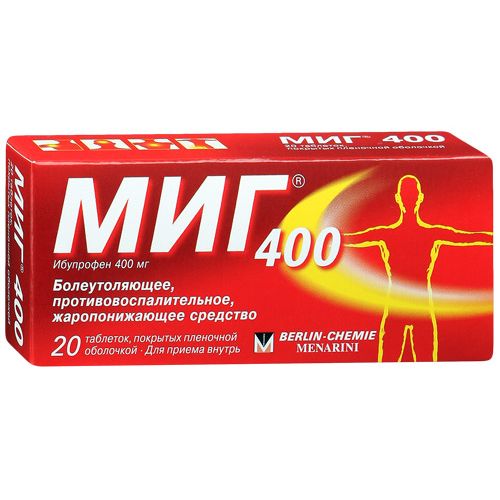
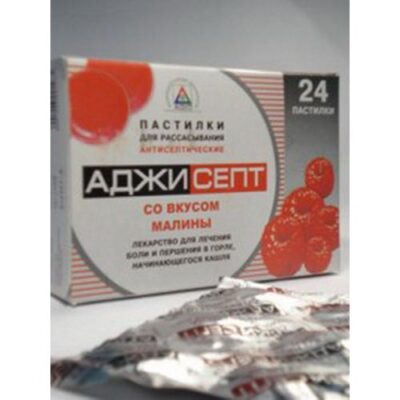
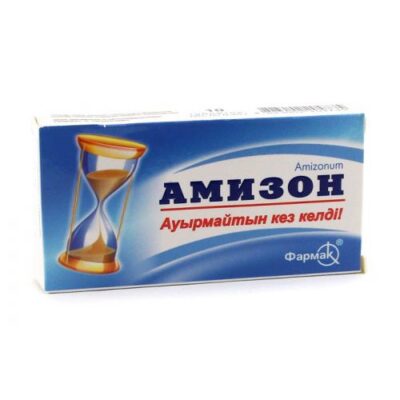
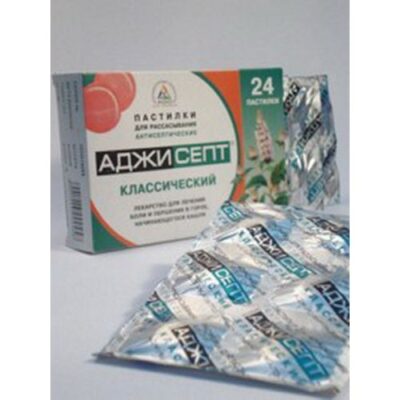
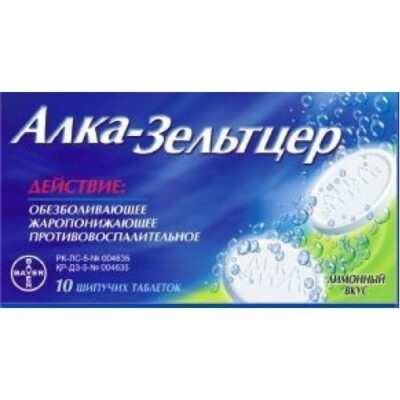
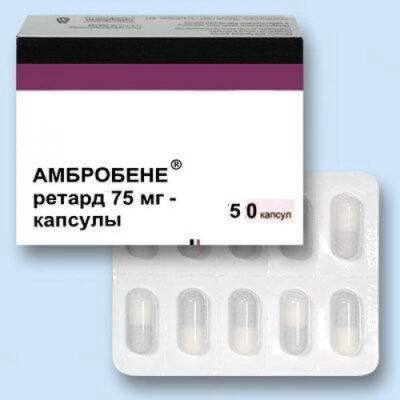
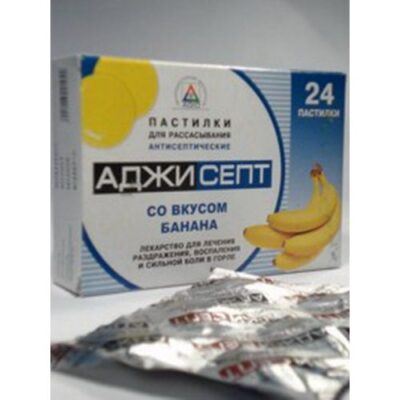
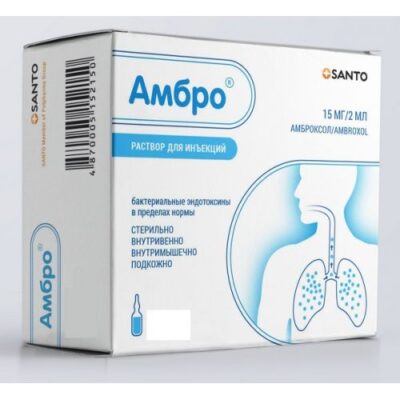
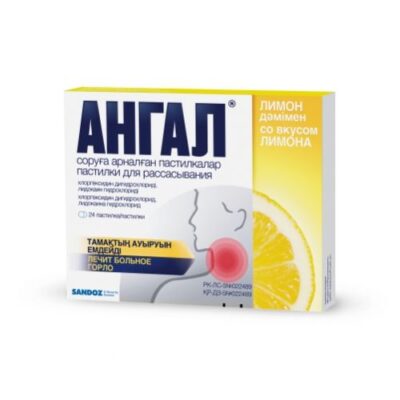
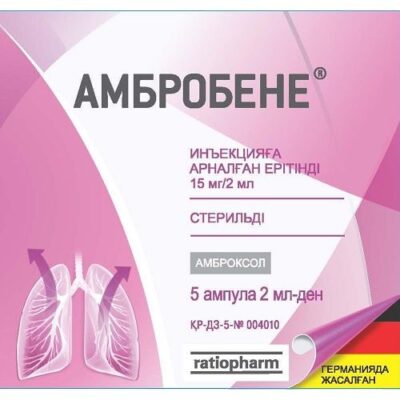
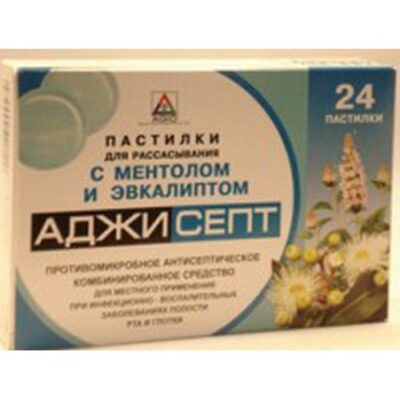






Reviews
There are no reviews yet.